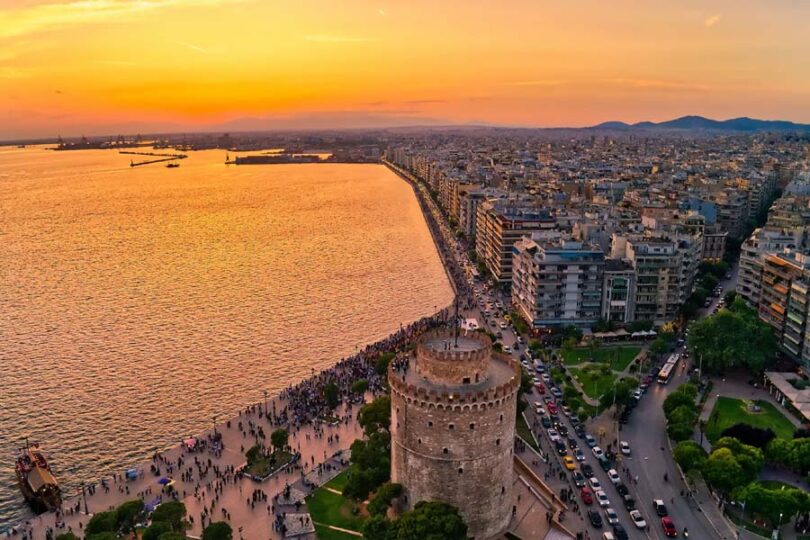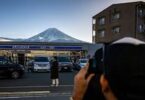Özge Şengelen
Thessaloniki welcomes its visitors with its fun and friendly people, streets that stretch to the sea and its interesting historical texture
Thessaloniki was the first stop of our long road trip adventure. On our journey starting from Istanbul, we crossed into Greece by passing through the border gate in Edirne. We often make our European trips through this border crossing by car, rather than by plane. That’s why this place is like a door to the world for us. After passing through this gate, we approach different cities that we want to wake up in, and those roads led us to Thessaloniki this time.
Since Thessaloniki is a city we planned as a stop on our road trip adventure to rest, we were only able to explore it quickly. For this reason, this beautiful city is on our list of places to visit for a second time. Thessaloniki deserves to be rediscovered for us, with its squares, museums, parks and long avenue where you can walk along the beach.
Despina Pandazi, one of the famous authors of Greece, described this city, which is the second largest in Greece and draws attention with its similarity to Izmir in Türkiye, as the daughter of Istanbul and the sister of Izmir.
The city’s long coastline is particularly likened to Izmir’s Kordon. It is a lively, fun and warm metropolis. The presence of a university also makes the city quite lively. You will witness a very active life in the city where the young population is high.
At the same time, I can say that you will be very impressed with the historical texture of Thessaloniki.
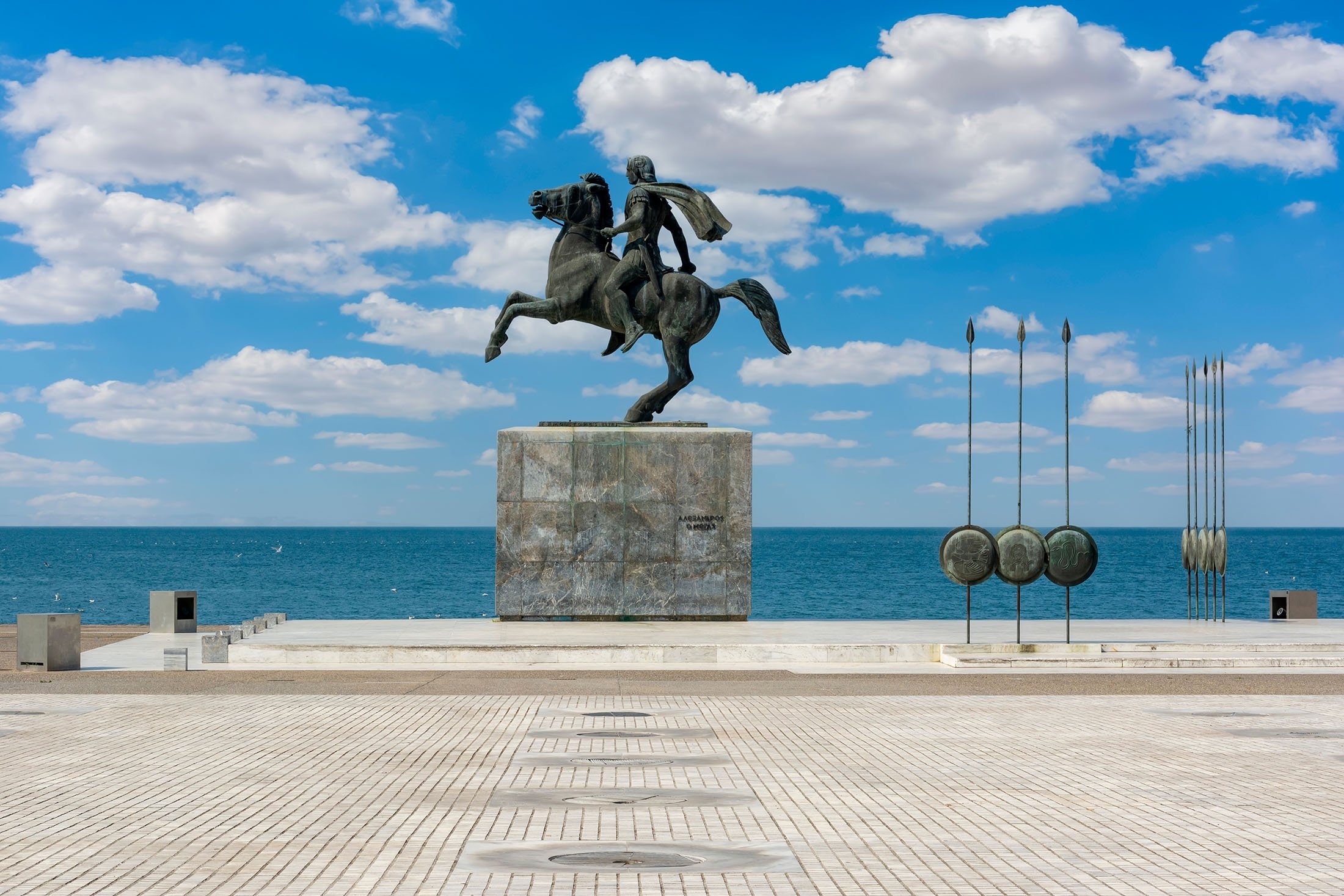
Atatürk’s house
The house where Mustafa Kemal Atatürk, founding father of Türkiye, was born, which we have seen in books since primary school, is located in the Aya Dimitria district in Thessaloniki. The Turkish Consulate is located next to the house where the republic’s father was born in 1881 and stayed from time to time until 1912. The house, which was converted into a museum in 1953, is a very important structure, especially for Turkish tourists. The rooms in the three-story house, located in a small courtyard, contain carefully selected items from Istanbul’s Dolmabahçe Palace and Topkapı Palace.
White Tower
The White Tower of Thessaloniki, located on the coast of the Aegean Sea, is the symbol of the city and is one of the ideal spots to start visiting the city. This historical tower, built during the reign of the Ottoman Sultan Suleiman I, was used as a garrison and prison at that time. As a matter of fact, there is a disagreement about the period when the tower was built. It is also said to be a tower from the Byzantine period. Some even say that the famous Ottoman architect Mimar Sinan built the tower. When Thessaloniki was conquered by the Greeks in 1912, the tower was baptized and painted white and was named the White Tower. Standing in all its grandeur on the coastline, the tower offers a wonderful view, especially at sunset.

‘The Umbrellas’
“The Umbrellas” sculpture, dazzling with all its splendor on the beach, is likely to have come across your search for Thessaloniki photos before.
Sculptor George Zongolopoulos’ artwork brightens the waterfront, comprising of umbrellas secured on lengthy steel poles.
The sculpture is located very close to the White Tower and was made after Thessaloniki became the European Capital of Culture in 1997. It comprises 40 umbrellas secured on lengthy steel poles. It is one of the iconic structures of the city and is located very close to the Alexander the Great Statue.
Yeni Mosque
The Yeni Mosque, which was the last mosque built in the city, is closed to visitors and not used today. It was built in 1902. It was built by Italian architect Vitaliano Poselli in 1902 for the city’s Dönmeh community, crypto-Jewish converts to Islam. There is also a clock tower in front of the mosque. When the Dönmeh community left the city during the population exchange between Greece and Türkiye, the mosque was used to house the Archaeological Museum of Thessaloniki in 1925. Today, it serves as an exhibition center and is open to the city’s Muslim population for prayers during Ramadan Bayram, or Eid al-Fitr. The mosque is also known as the Hamidiye Mosque.
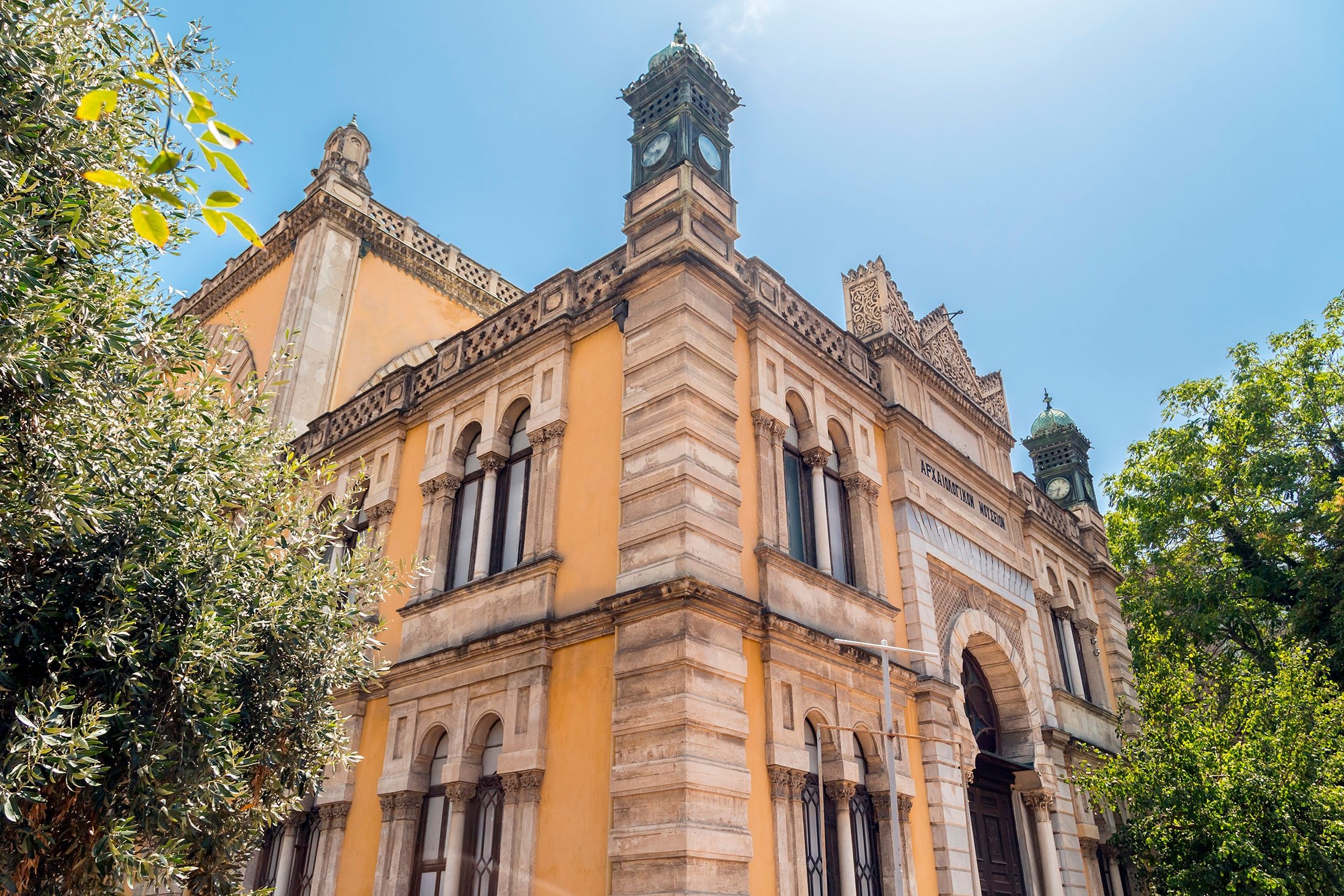

Yedikule
Heptapyrgion, or the Yedikule Fortress – meaning “Fortress of Seven Towers” – built by Ottoman Sultan Bayezid I, is one of the oldest surviving Ottoman structures in Thessaloniki. The fortress, which was demolished by the Byzantine Governor in 1402 and rebuilt by the Ottoman Sultan Sultan Murat II, who later captured the city again, was used as a prison for a long time. Despite its name, the fortress features 10 towers but was named as such probably after the Yedikule Fortress in Istanbul. You can watch a wonderful city view from the fortress, the highest point of Thessaloniki, sit in the cafes around it and sip your drinks while watching the sunset.
Roman Forum
Thessaloniki is also home to the Roman Forum, an ancient Roman-era forum of the city. The forum, which was used as the political and life center of Thessaloniki during the Roman Empire period, still has traces of the past. You can visit the Roman Forum and the nearby Aristotelous Square back to back.


Aristotelous Square
Every city has a square where its heart beats. Aristotelous Square, located by the sea, where the heart of Thessaloniki beats, is one of them. You can have a pleasant meal or sip your drinks at the many cafes or restaurants in the square, which hosts festivals, celebrations and many cultural events.
Rotunda
There are two different rumors about the purpose of the Rotunda, which takes its name from its circular shape. A rotunda is any building with a circular ground plan and is sometimes covered by a dome. The Rotunda is said to have been built as a tomb for fourth-century Roman emperor Galerius, one of the famous rulers of Rome. According to a different rumor, it was built as a religious building and was dedicated to Zeus. The Rotunda, which still has a minaret next to it and was used as a mosque during the Ottoman period, waits for its visitors as a museum today. Finally, you can see the Arch of Galerius, which was built between A.D. 298 and 305 to celebrate the victorious campaign of Galerius against the Persians. The arch is located in the south of the Rotonda.
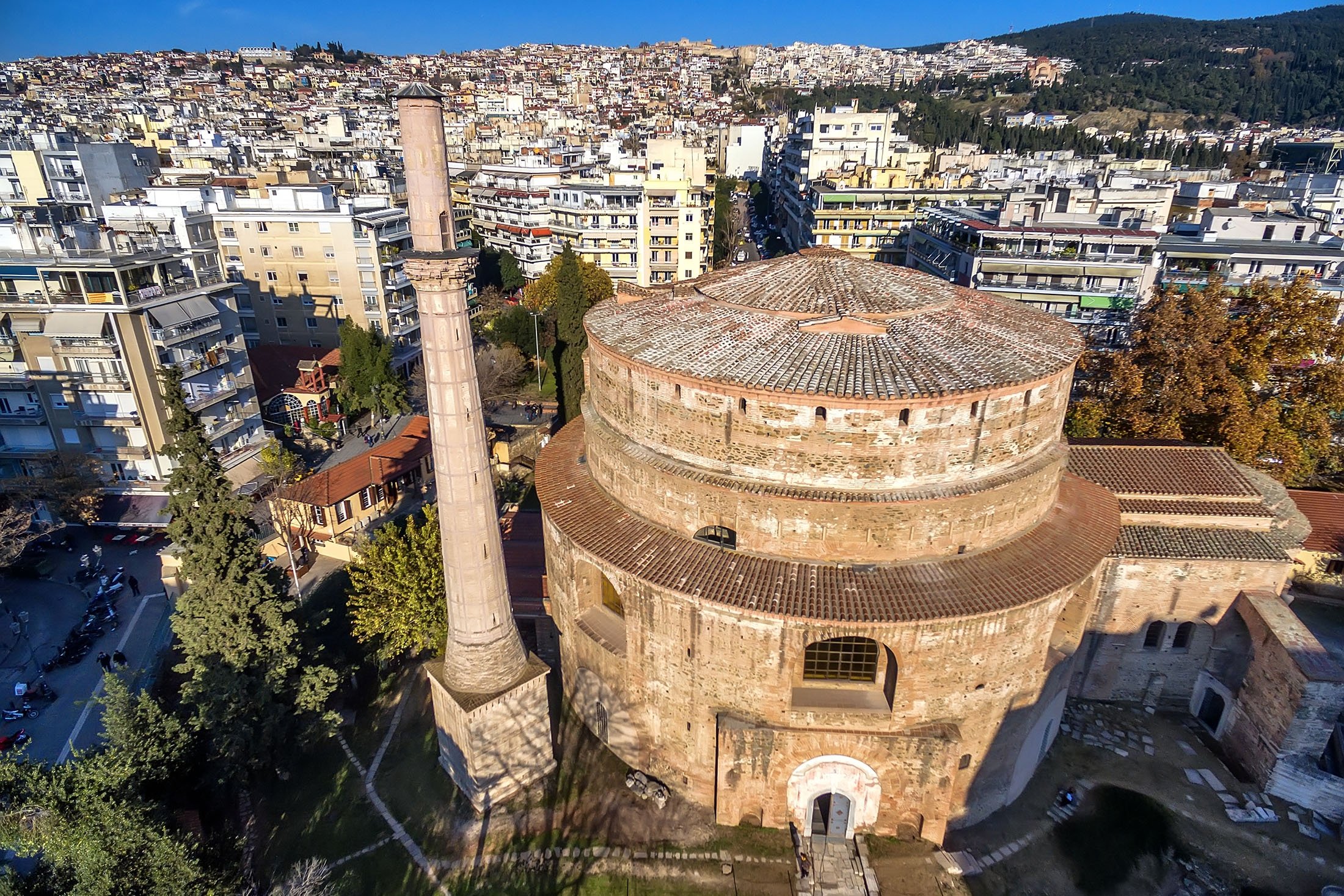
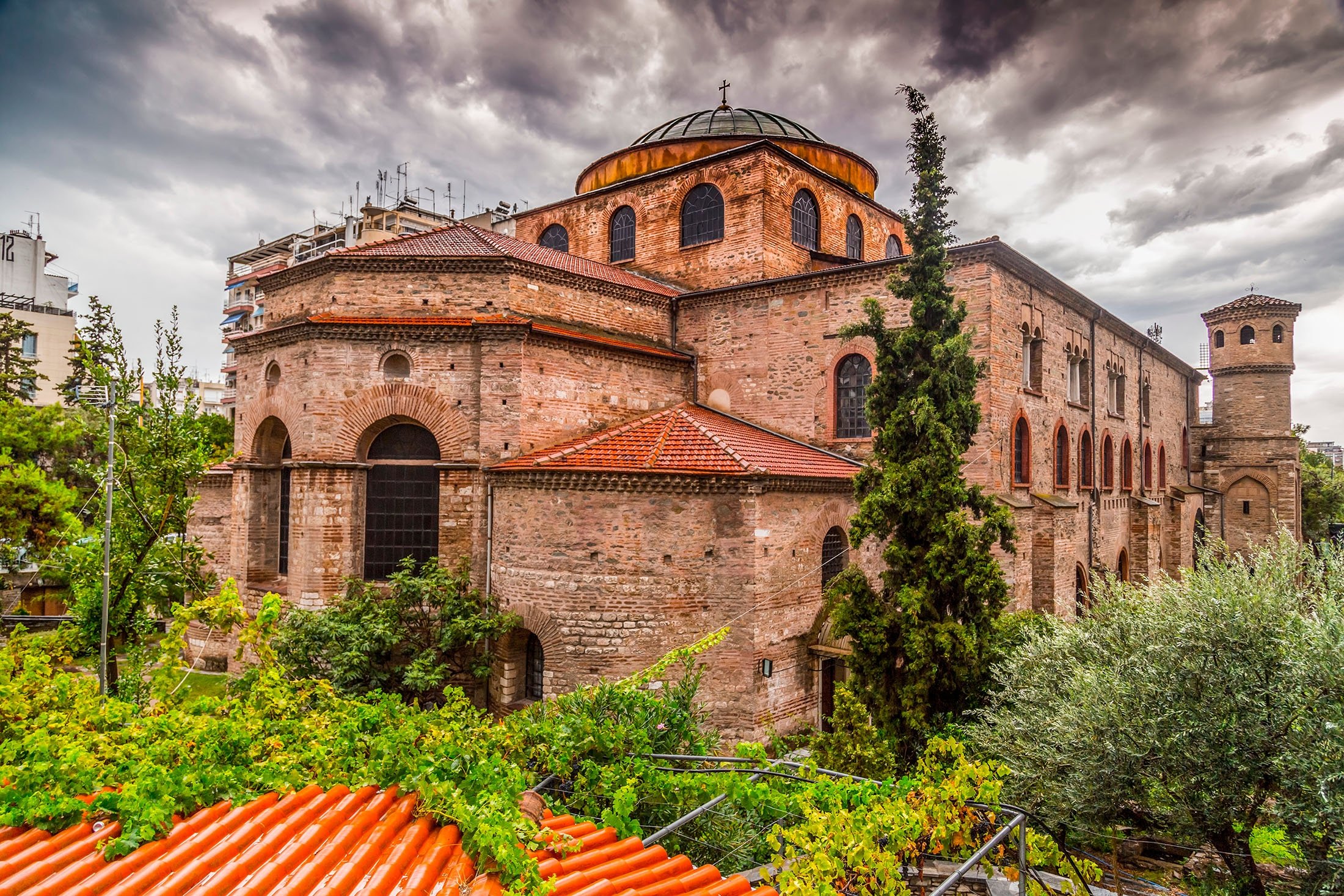
Hagia Sophia
As the name suggests, the church of Hagia Sophia was built on the model of the iconic Hagia Sophia in Istanbul. The church is one of the most important churches in Greece and is a UNESCO World Heritage Site.
Although Thessaloniki is a city that is considered by many to be small enough to visit if you spare a few hours, in our opinion, it is not like that at all. This city, where we felt quite at home, offers travelers a very enjoyable and historical sightseeing experience.
Moreover, if you go during the summer, you can enjoy the sea at the wonderful beaches in and around the city, and also in the very nearby Halkidiki, which is called the Maldives of Greece.
Courtesy: Dailysabah

